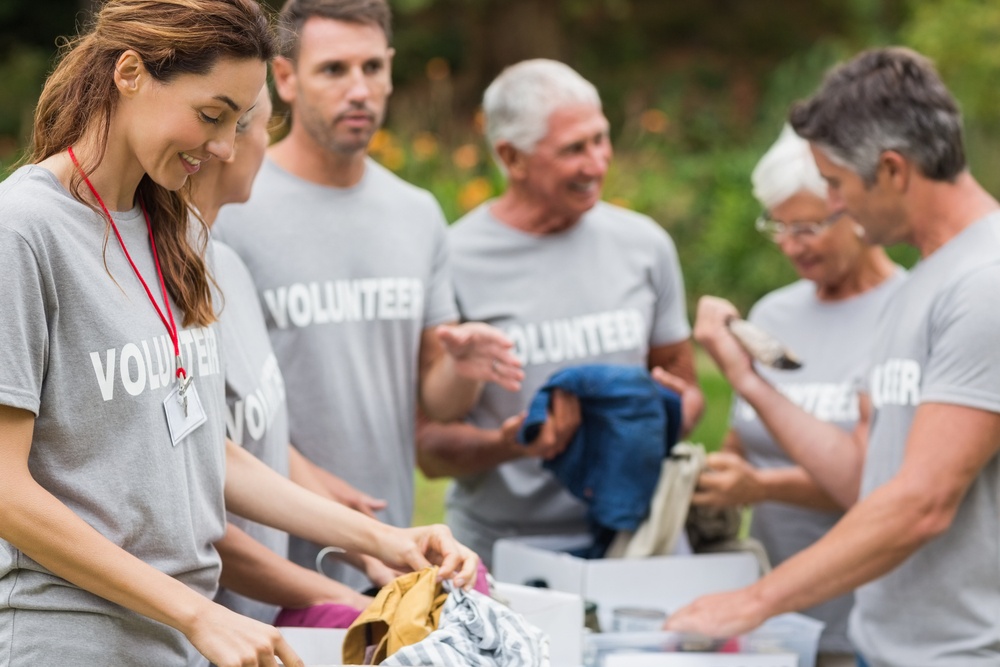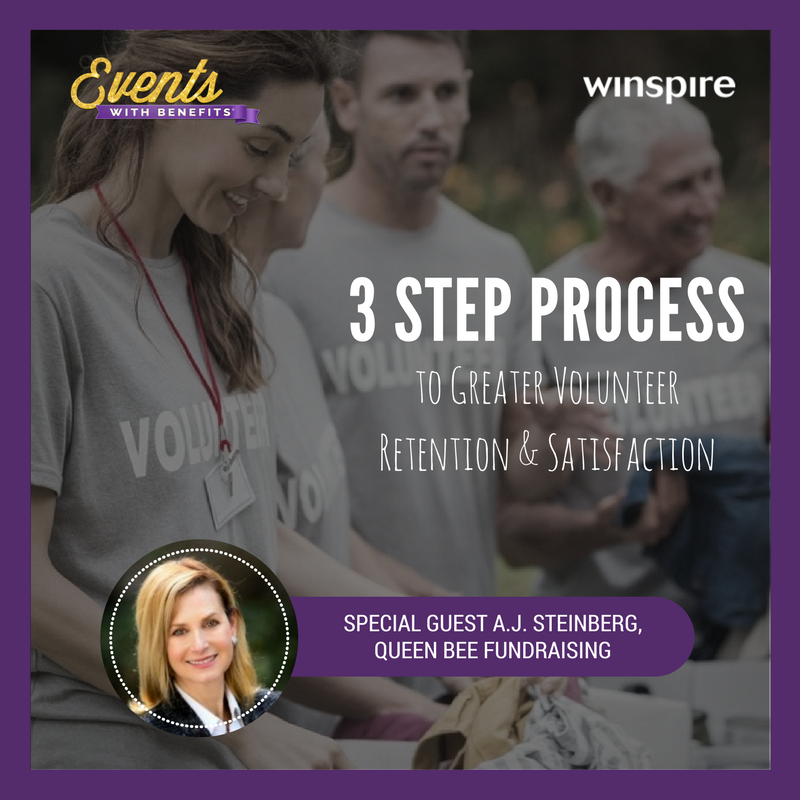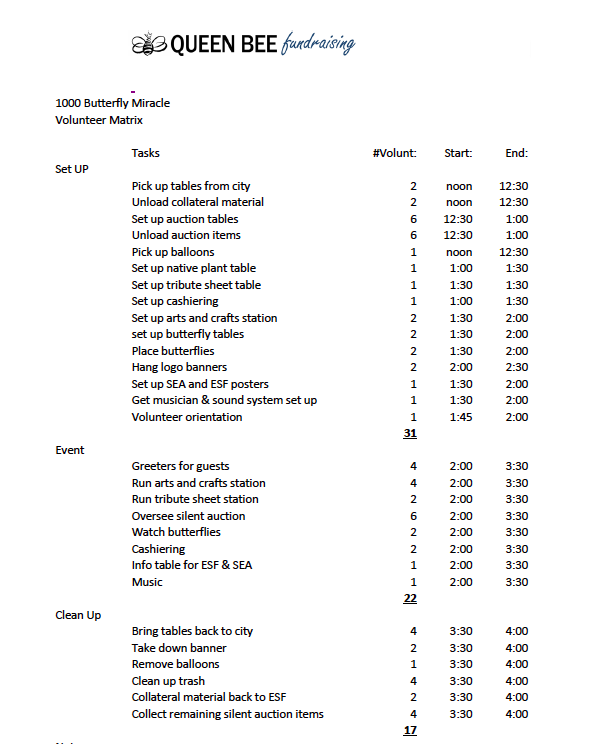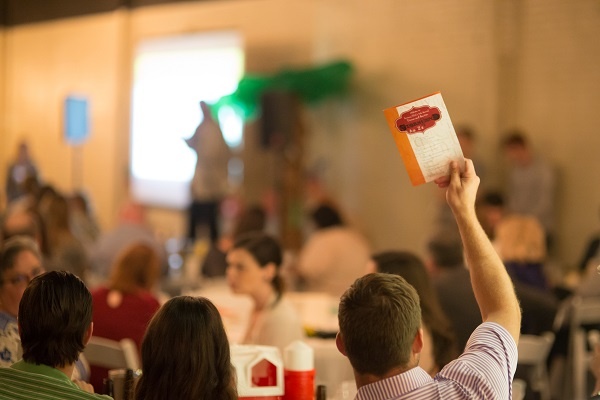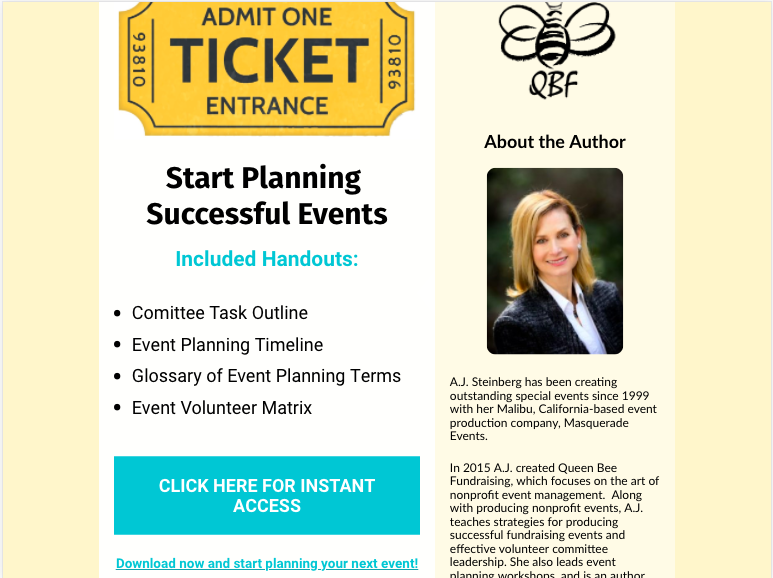“Did you know there’s approximately 61.8 million volunteers in the United States alone?” shares A.J. Steinberg, founder of Queen Bee Fundraising, in a recent episode of podcast Events with Benefits. “These are individuals who contribute a total of 8 billion hours of volunteerism per year. That volunteerism, if monetized, is equivalent to the gross domestic product of Egypt!”
In addition to providing manpower, 67 percent of people who volunteer become supporters in a more meaningful way down the line. In an industry where a 2 to 5 percent response rate from appeals is considered successful – investing in your volunteers offers an incredible potential return.
Volunteers are among your nonprofit’s most important assets.
Last week we shared part 1 of our session with Steinberg all about charity auction planning. Today we will focus on her tips for volunteer management and retention. Learn:
- How the “volunteer multiplication effect” boosts ticket sales
- The benefit of having two chair persons (a junior and senior)
- 3-step process to greater volunteer retention and satisfaction
- How to organize a volunteer “command center”, and much more.
How can nonprofits better recruit and retain volunteers?

So we don’t give volunteers busywork – they get real work. If they have skills and talents, say they’re graphic artists or have a background in social media, we’re matching their talents to the tasks we give them. We’re not just saying, ‘Go out and solicit auction items, even though you’re a CPA and could help us with accounting.’
We want to make the volunteers feel like they’re important, they’re VIPs, and they deserve to be heard.
This is another core tenet of my teaching: Organization, Communication, Appreciation.
1. Organization
Before I even contact volunteers, I use what is called the volunteer task matrix*. This is a document where you organize all the information, data and tasks before you ever reach out to volunteers. When you’re prepared early on, you’re not saying, ‘Just show up and we’ll find something for you to do.‘ That’s a death knell.
2. Communication
Once you are engaged and interested in volunteers, next comes communication. Get them the information they need in advance, in a timely manner.
You might email them and say: ‘You’ll be showing up Saturday, November 3rd and working from 12 to 4. It’s going to take place outside so bring a hat and sweater in case it’s cold. We’re on grass so please wear shoes. We will not have a room for your valuables so keep them in your car.‘
Any information you communicate with them tells them you’ve thought of these things in advance and that they’re ready for a smooth experience.
3. Appreciation
Appreciation is thanking volunteers before, during and after an event. Thank them as you send out the call to action recruiting volunteers. Say, ‘We’re so thankful and appreciative of the time you’ll be giving us.‘

After the event, we send follow-up thank you emails or letters and invite them to participate in other opportunities with our organization. If we can give them a t-shirt or goody bag, we send that afterwards as well.
*What is the volunteer matrix?
Before an event, I use visualization to visualize every task that needs to be done at an event. Every event is unique, but there are universal tasks.
First, load the cars up with all the auction items and collateral materials from the organization. Next, what time do we arrive at the venue? Are the tables set up, or do we have to set up the tables? Do we need to pick up balloons or snacks? Who’s going to unload the auction items? Who’s setting up the silent auction and live auction? Who’s doing the video check?
I go through every step, typing and writing down everything between loading the cars and the final walkthrough.
The volunteer matrix shows what we need done, and I assign the amount of people I need to do it. It makes you feel like a superstar because you know exactly what everyone is doing at what time.
In the handouts that I’m giving listeners of this podcast, I’m providing a sample and template of this important document.
Do you use software to manage volunteers?
When I started, we used spreadsheets. There was no internet, no personal computers, no platforms. So I always used Excel spreadsheets.
When I come onboard with clients, I want to create the easiest transition possible. Ideally the nonprofit is able, in 2 or 3 years, to take over the event planning so they don’t need me. (I’m the worst at business if you think about it, because I try to make them so sufficient they won’t need an event planner.)
I try to find an easy system for them to use with a low learning curve and low capital outlay. A lot of volunteer management programs, you do have to pay. Every time you have a turnover in staff, the new person has to relearn the system. That doesn’t mean I’m against online platforms, but because I work with many small- and medium-sized organizations, and there is significant turnover, they find it effective to have something they can manipulate in any computer, any place, easily, and new people can come in immediately and grasp it.
Is there anything we can do to freshen up a repeat event? What happened to, ‘If it ain’t broke, don’t fix it‘?
Auction organizers do tend to get complacent. They figure everything’s working fine, so we really don’t need to put that much into it. That’s not the case. You do need to change it up, otherwise your audience will get bored. They start to anticipate the same old, same old.
There’s two ways to hit the refresh button. First, you can change the actual event. If you can add new elements – like the location or the theme – that will sell tickets and help keep it fresh.
Next, you can change the people working the event.
What do you mean by that? Changing up the committees?
I always advise nonprofits to get new volunteers for your event committee, year after year. I know it’s a hassle. But this brings me to a cornerstone of my philosophy.
Event committees are the beehive for your event.
All beehives in the real world only exist to make honey – for a fundraising event, that’s money. Your beehive is the event committee, and the Queen Bee is the chairperson of your event. (Hence the name of my business, Queen Bee Fundraising!) That Queen Bee is an influencer who brings her well-connected, influential worker bee friends into the committee, and those are the ones doing the heavy lifting. They solicit donations, solicit sponsorships, sell tickets. Those people each bring 20 people to your event. So if you have 10 well-connected, well-to-do people involved in your event, they’re proud of it and have skin in the game, they’ll bring 20 people each.
That’s 200 tickets sold. Two hundred people who know about your event and cause just from the event committee alone!
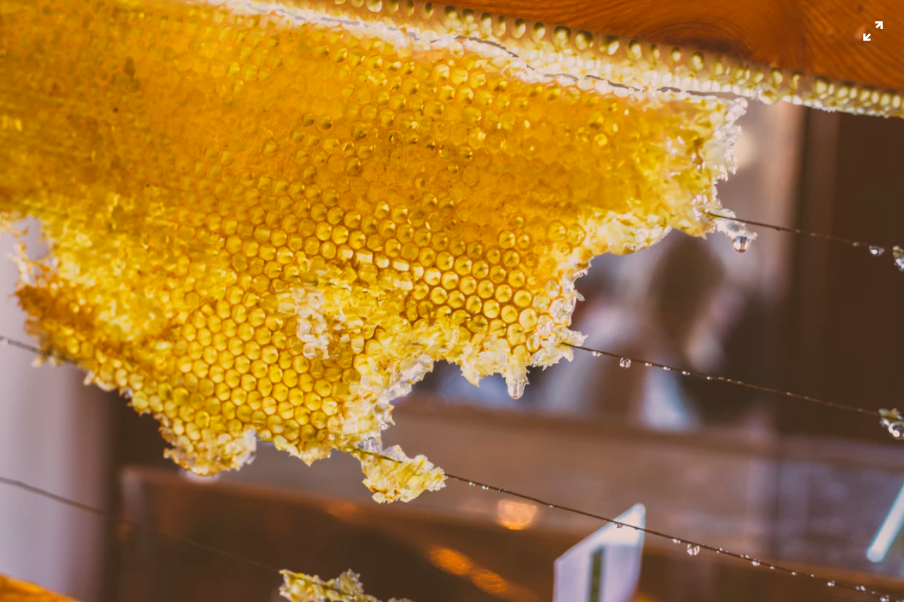
Who should spearhead an auction event?
I like to have two chair people at the top. I’ve worked with some of the most established guilds in America, and lots of times you’ll see one event chair, but usually they have two chairs.
First of all, you double your impact. When you have a person’s name at the top of your letterhead as the chair of your event, they are really going to bring their friends and families with tribute books, sponsorships and ticket sales.
Also, having two doubles the impact while lessening the work.
What I like to do is have a senior and a junior chair. The senior chair has been through this once, so they know the ropes. The junior chair comes on board and learns from the senior chair. The next year, the junior becomes the senior chair and you bring somebody new on.
It’s an amazing, strategic shift in your event committees. You are constantly rotating leadership, but you get the benefit of somebody who’s had experience in prior years.
How do volunteers affect ticket sales?
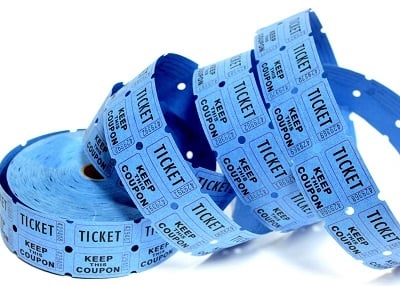
People do not specifically buy tickets because they support an organization, unless they’re already big supporters. They buy because of who asked them. Just like a standard appeal-based fundraising campaign, people give because of who asked. Similarly, whoever is involved in your event is likely to tell friends, ‘Hey, I’m on the committee involved in this event, would you like to come?‘ Their friends, colleagues and families are the ones who are going to buy tickets.
I call this the volunteer multiplication effect: Every volunteer and engaged board member should bring 20 people to your event, whether through donations or actual ticket sales.
The second ‘must-do’ to boost attendance is to build an amazing event itself. Your event needs to be interesting. Put yourself in a guest’s shoes and think: ‘What would I want to do with my Saturday night, or my Thursday night?‘ Do you want to sit through a badly timed stage program that drags on and on? Of course not.
The better your event, the more likely people will buy tickets the first time around, then come back next year because they had a good time.
Got any more tips to improve the night-of volunteer experience?
When you’re doing an event, it’s very difficult to manage volunteers. It’s like herding cats. They don’t know where to go, they’re chatty. So I also use something called a command center. This is where volunteers can find their assignments, get a schedule of events, see what’s happening, access water and the first aid kit.
I let volunteers know well in advance where to check in and to look for balloons or something else that makes the command center easy to find from anywhere in the room.
The idea is to centralize where the volunteers go to get information. This circumvents people running up to you as you’re busily trying to get something done and saying, ‘I have a question!‘, and you trying to put out fires. You want one place set up where everyone can get questions answered.
—
Huge thanks once again to A.J. Steinberg for sharing her expertise. To find out more about Queen Bee Fundraising and her event planning services, visit http://www.queenbeefundraising.com.
Hear the rest on Events with Benefits
This is just a taste of Steinberg’s invaluable advice. Other notable topics include job descriptions for event committees and volunteers, the average life span of an event, and how fundraising events can attract new attendees.
Grab a pen and notebook and listen to the entire session below, or visit the full site here.
Finally, click below to request Steinberg’s free ‘Start Planning Successful Events Kit‘, including an event planning timeline, event volunteer matrix and more.
{{cta(’90f1ff92-f671-470b-9d46-61fb90080879′,’justifycenter’)}}
